When a client reviews the topics we’ve suggested and asks, “Why these topics?” What this really translates to is, “Why would we spend money to create this kind of content? I don’t see how this gets us new customers.”
This happens whenever they target top-of-funnel topics—the broad, awareness-building kind that focuses on educating people instead of pitching them.
Content planned in your editorial calendar doesn’t always have to tie back to revenue in a direct line. This isn’t the same as saying that content shouldn’t aid revenue growth — but it won't always be straightforward.
We create content to relieve constraints on growth. Doing this means you have to identify those constraints first.
Constraints to consider:
- A need for brand awareness/discovery → TOFU
- If you have plenty of awareness but a hard time converting, then TOFU content makes the problem worse.
Building Trust & Brand Awareness
Top-of-funnel content is best when you need to:
- Establish trust with an audience who doesn’t know who you are and;
- Grow your brand awareness.
This applies to brands with:
- Much lower branded search traffic relative to their competitors
- Much lower direct traffic to their sites relative to their competitors

60% of Asana’s organic traffic is from branded searches (an estimated 1.3 million traffic/month). Scoro only gets about 9% (≈ 8,000/month) of its organic traffic from branded searches.
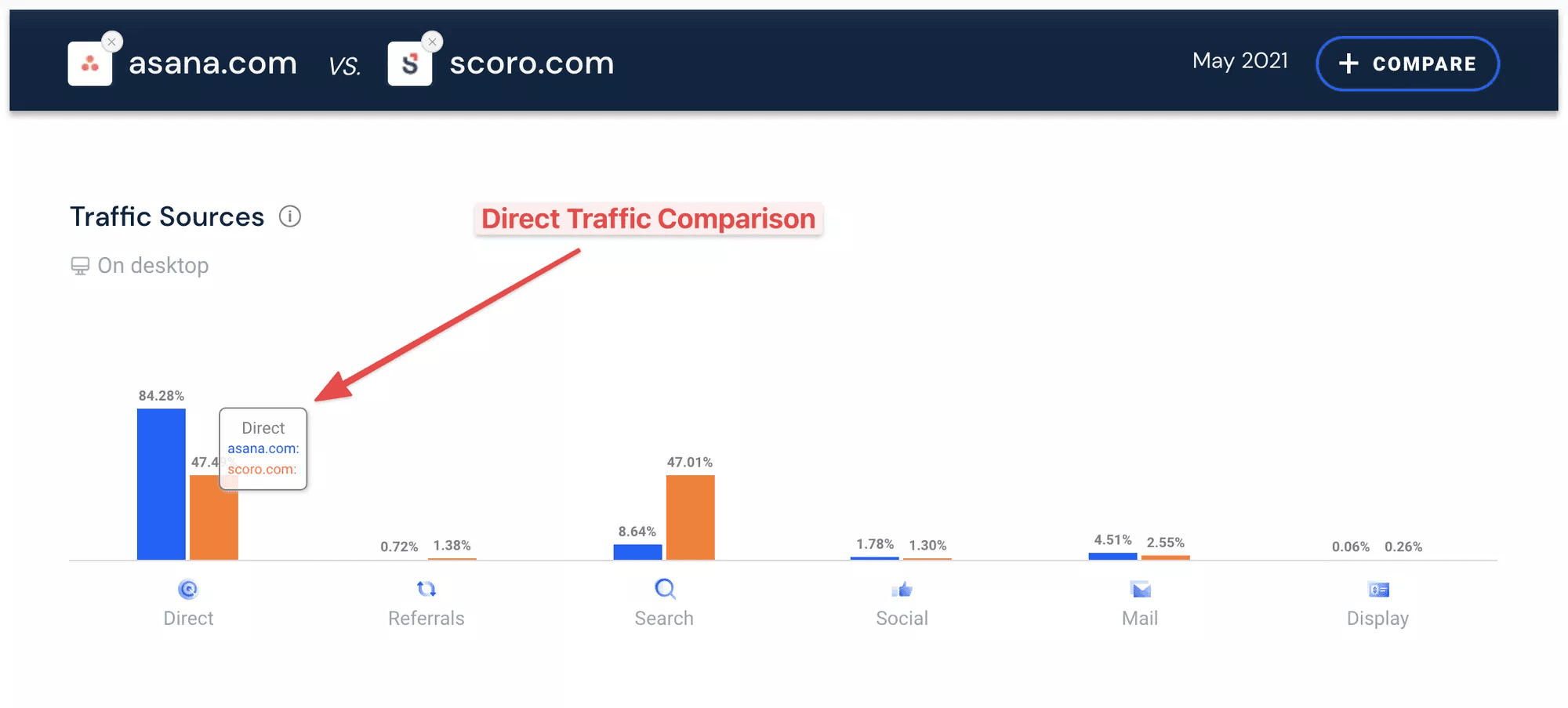
Nearly 84% of Asana’s traffic comes from direct channels compared to Scoro’s 47%.
We could say that we’d expect this from Asana. They’re a project management tool that users visit every day. That same logic applies to Scoro as well though
Fighting to be Considered
Top-of-funnel content gives you a chance to convince people that you can solve their problem.
If you immediately begin pushing the sale you’re doing yourself a disservice. People like you more if you help them. Help them now so they consider you later when they're looking to buy.
And that’s the primary goal: to be in the consideration set.
That consideration set is small. Not because buyers whittle it down to the best, but because humans excel at screening things out.
Consider how advertising works for a moment. Advertising works by being recallable to people exposed to it. Through exposure, brands gradually build up memory structures in the minds of consumers. This keeps them in the running for that consideration set.
This same concept from advertising applies to organic search. Every visit from organic search is like one more ad impression. One that’s a lot more powerful than the glimpse that flies by as someone scrolls through their feed.
Even when the person doesn’t take action — it still has value.
Developing Mindshare
Winning on search is a zero-sum game. The more SERP real estate you own in your industry, the more you win.
Top-of-funnel topics are the best way to capture large shares of the available organic search traffic with a single piece of content. They often encompass hundreds to thousands of related search terms.
Your brand gets seen over and over again whenever people search for something related to your industry.

First Movers Advantage
Look for trends gaining momentum in your industry. You can use top-of-funnel content to get there before it gets too competitive. Doing so while it's easy will net big returns in the long run.
The earlier you get there the harder it is for other brands to unseat you—even the bigger brands.
In August of 2017 searches related to keto began to trend up.
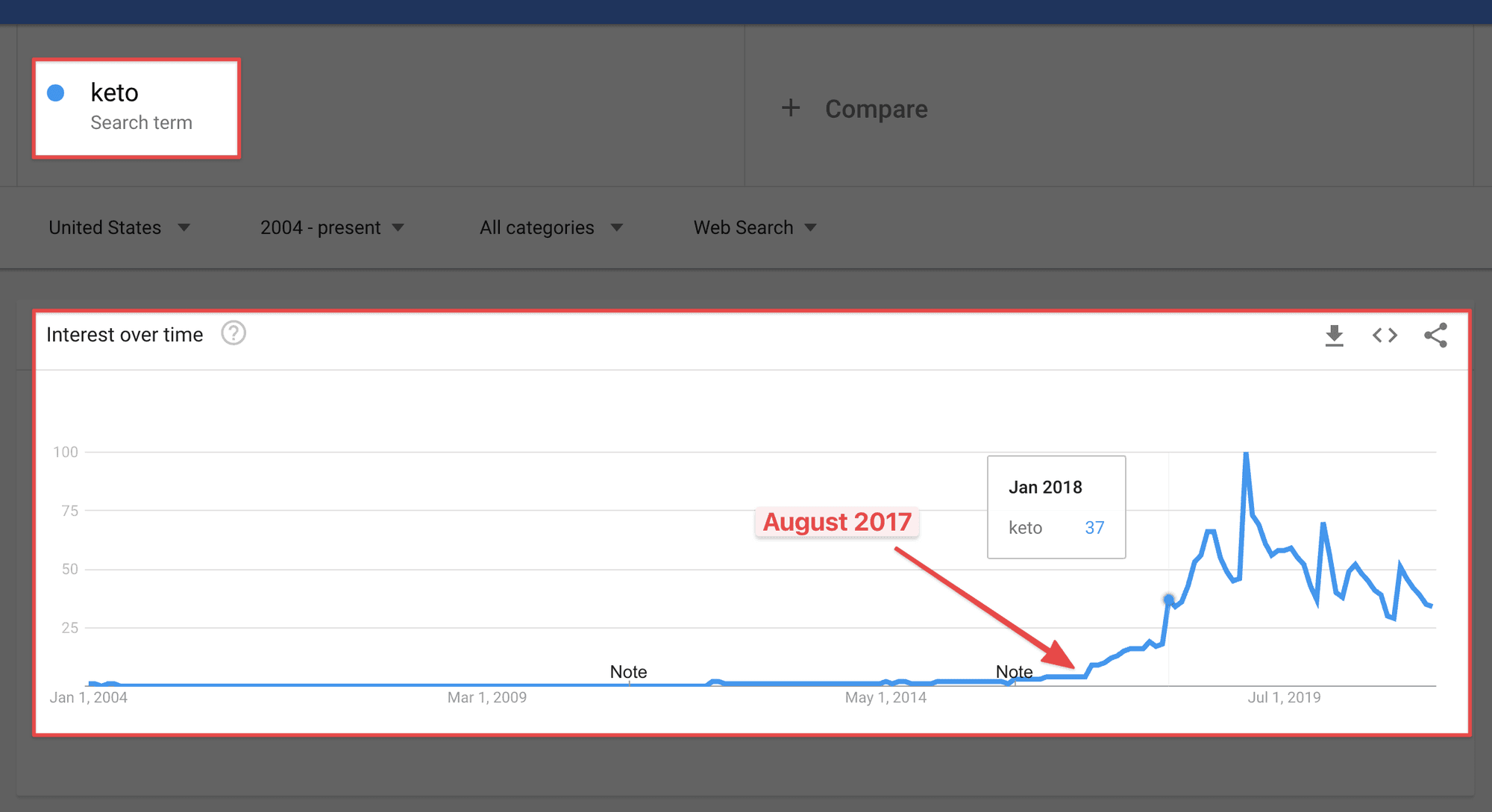
Healthline anticipated this and rode the wave — attracting a lot of free traffic along the way.

The key is to spot opportunities early and get entrenched quickly.
Building Authority
There are two primary ways to develop authority in the world of SEO.
- Getting links from other authoritative websites and;
- Contributing enough content to the corpus of industry knowledge that you build a name for yourself.
Link Building
Backlinks are important for building authority. I think we can all collectively agree on that.
It's also not easy.
Especially highly competitive industries like SaaS, finance, insurance, and health. If all you have on your website is bottom-of-funnel content, you'll have a hard time getting links.
People prefer to link to content that’s interesting and helpful to their audience—not content that’s too promotional. Review some of the top SaaS companies in ahrefs and you’ll find top-of-funnel content usually generate the most links.
Related Sources:
3 out of the top 7 most linked-to pages on HubSpot’s website are informational/education (TOFU) content.
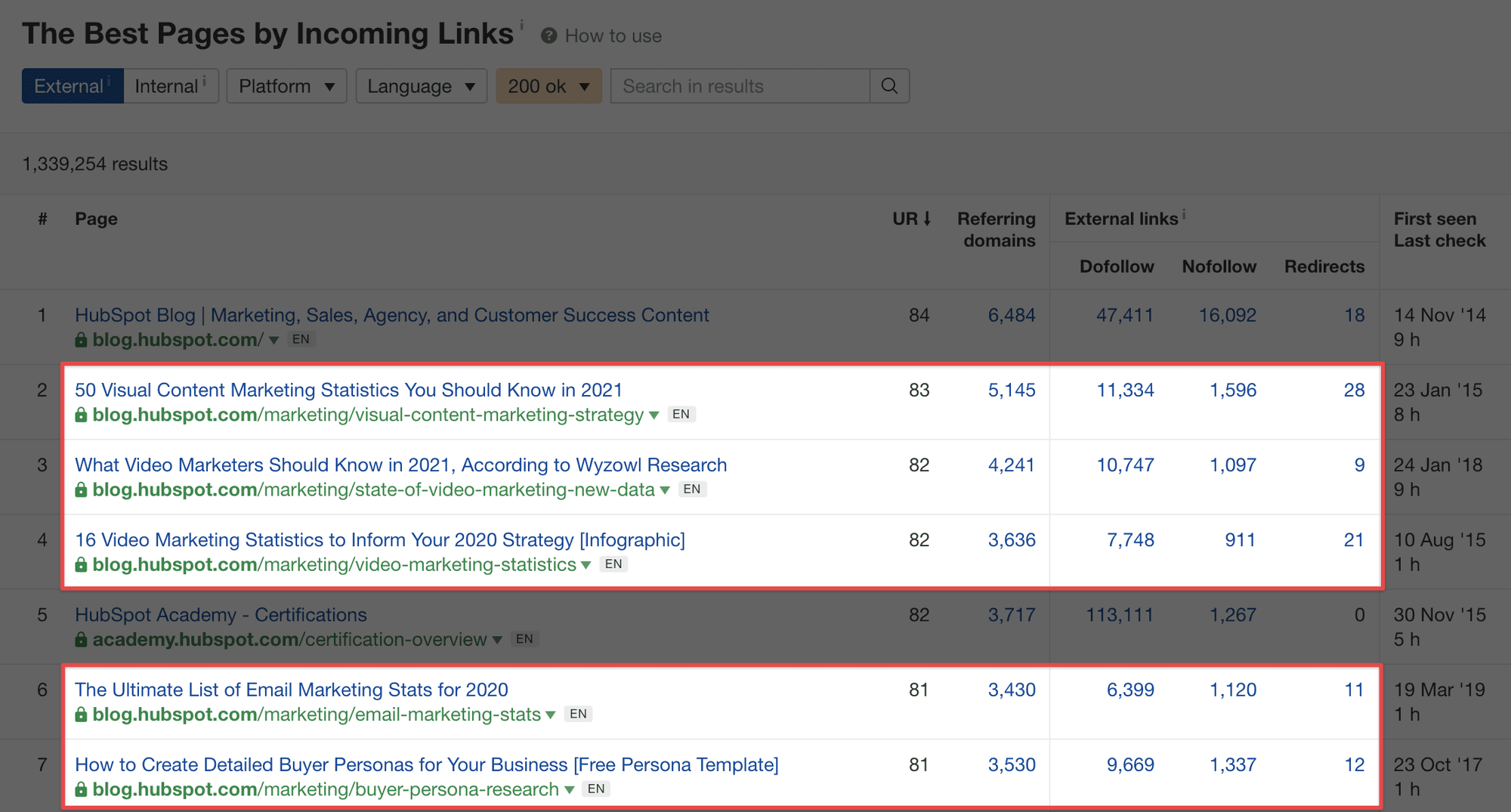
We see the same thing with Canva. 6/8 pages with the most backlinks are top-of-funnel content.
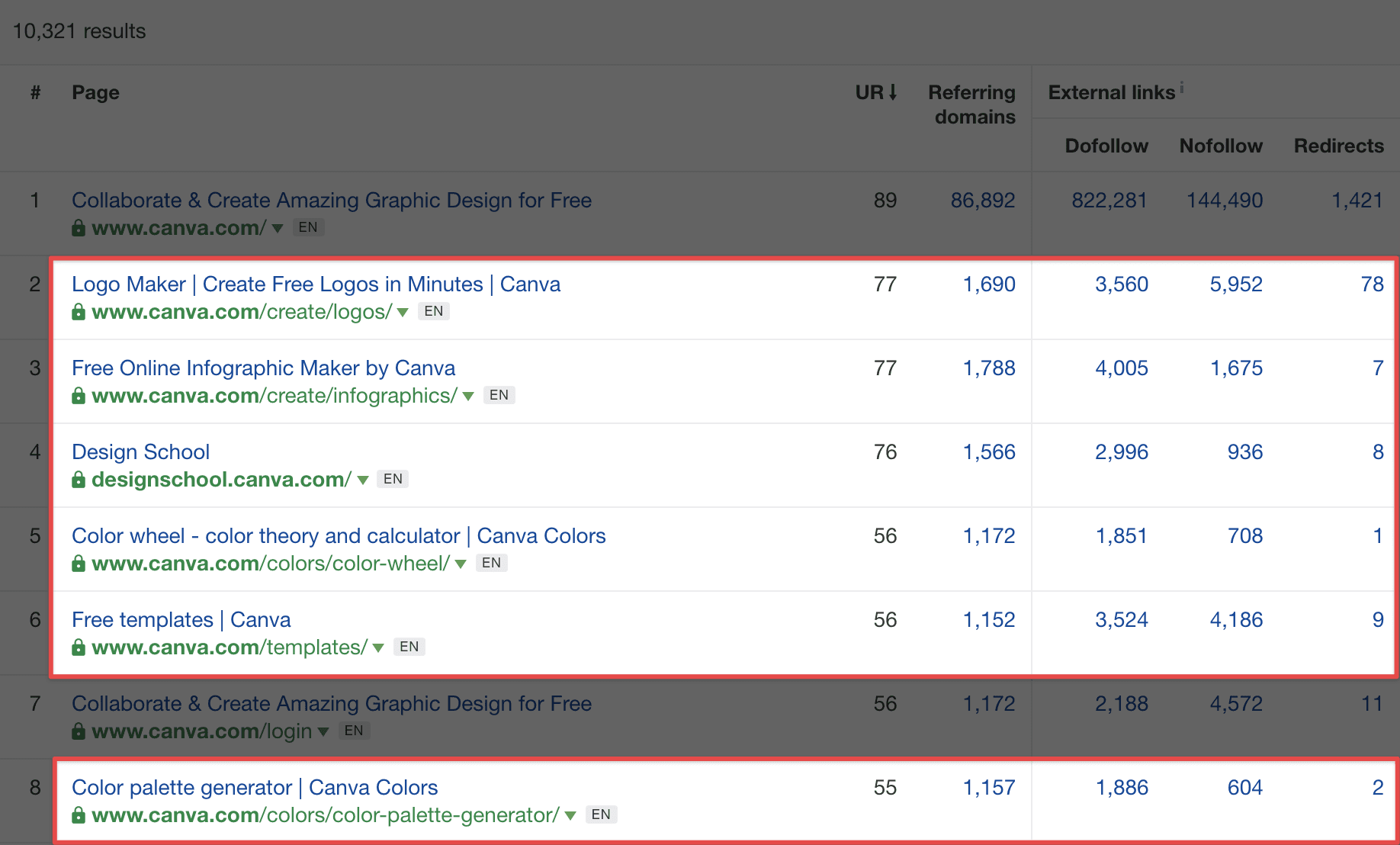
Thought Leadership
Being a thought leader and creating content is a damn good way to get people to share and link to your content. The more people it reaches the more likely you’ll be able to influence the narrative in your industry.
Producing good thought leadership content that will pick up traction isn’t easy—but it pays off in the long run when you’re competitors and customers begin adopting your philosophies.
Katie Parrott, from Animalz, describes this as the relationship you want your company to have with your space. How your customers, competitors, and your whole industry see your brand.
Look at HubSpot. They’ve produced a ton of thought leadership over the years, shaping how we talk about marketing. We all use phrases like inbound marketing, hub and spoke, and topic clusters now—all because HubSpot created content that sought to influence and educate the industry as a whole.
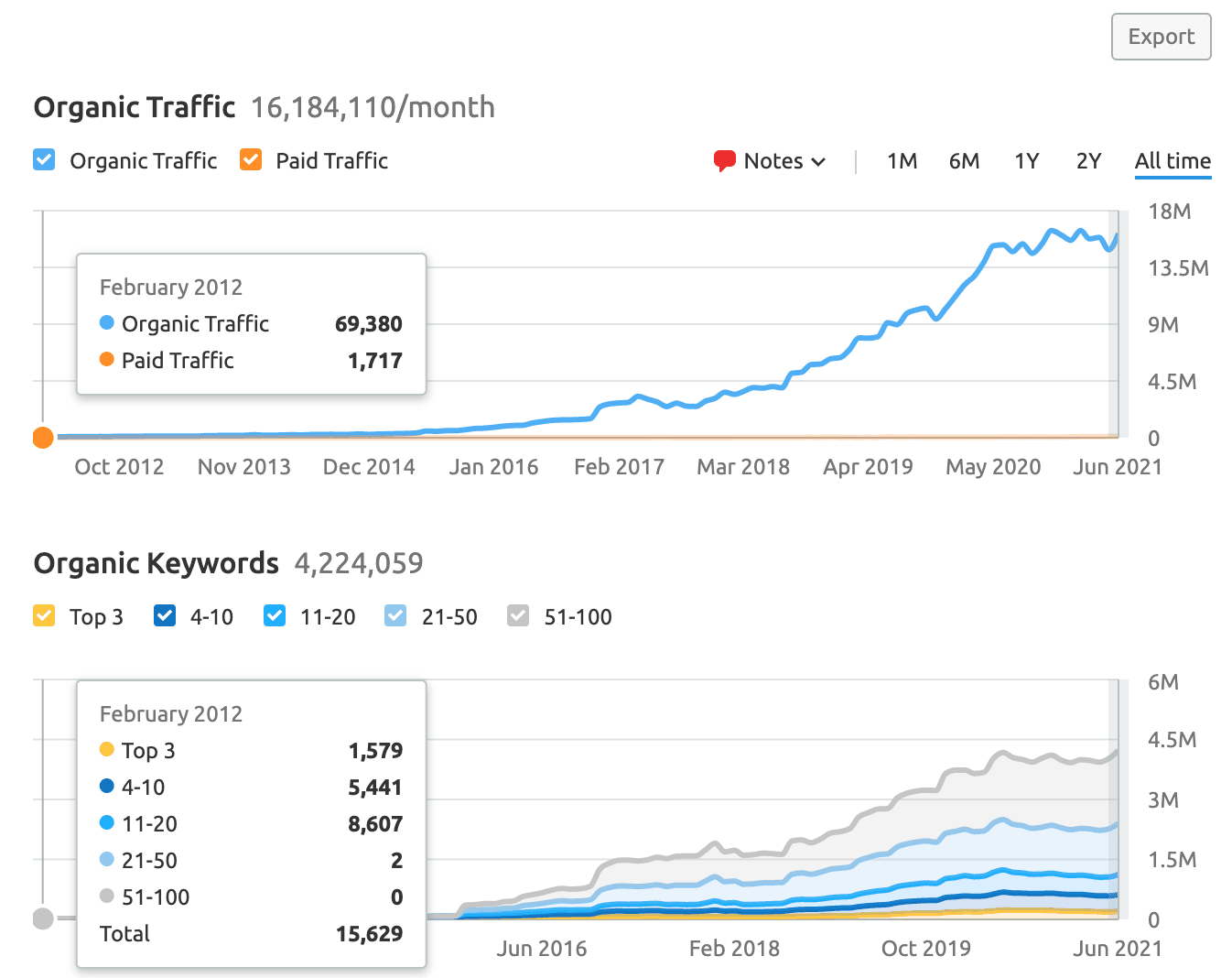
I filtered HubSpot’s Top Pages report to include questions that weren't related to the brand name. Some of these pages get more organic traffic than the entire website of some SaaS companies.
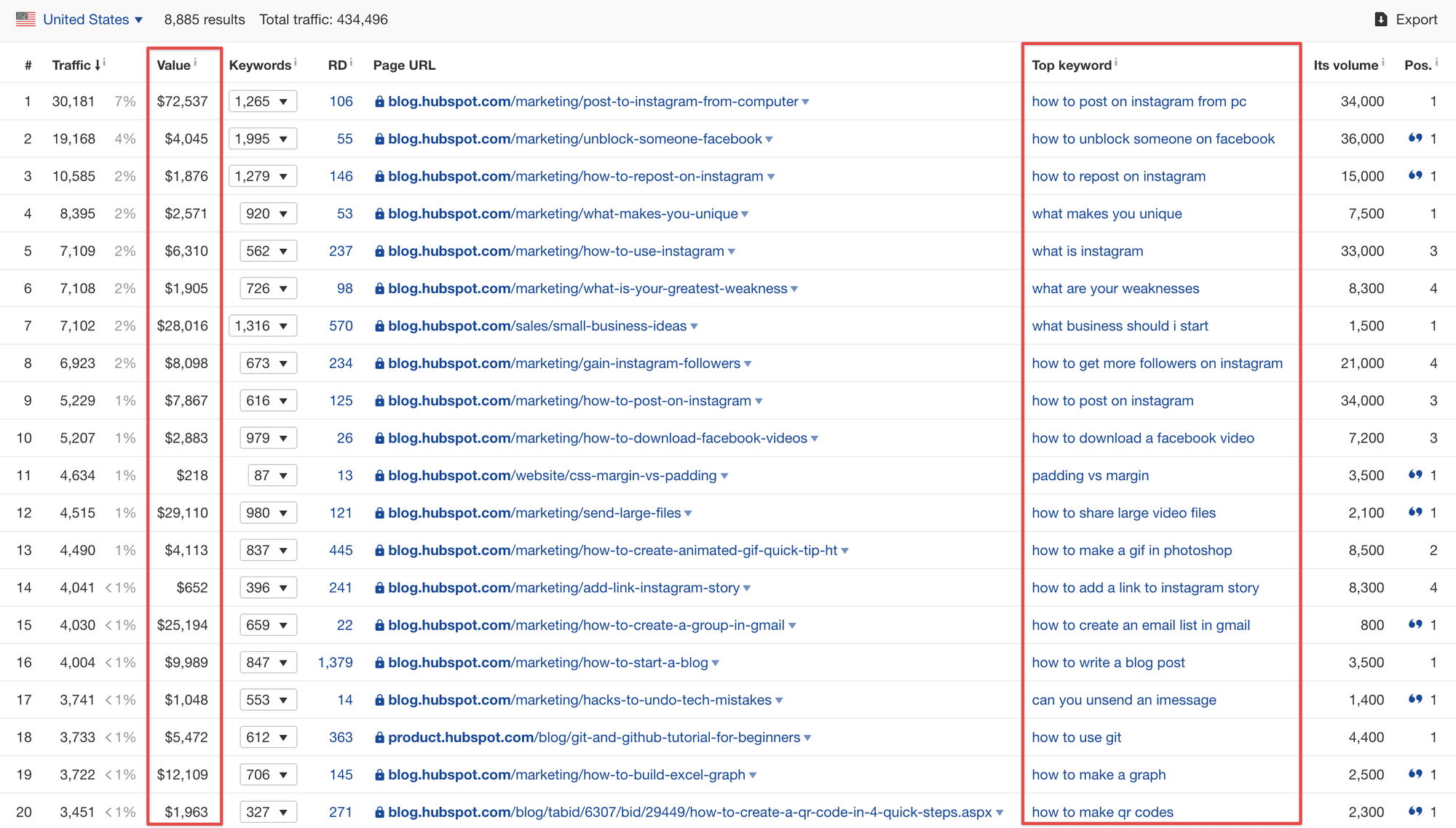
At nearly $600/share and well over 18 million monthly organic visitors, HubSpot’s approach to content is working.
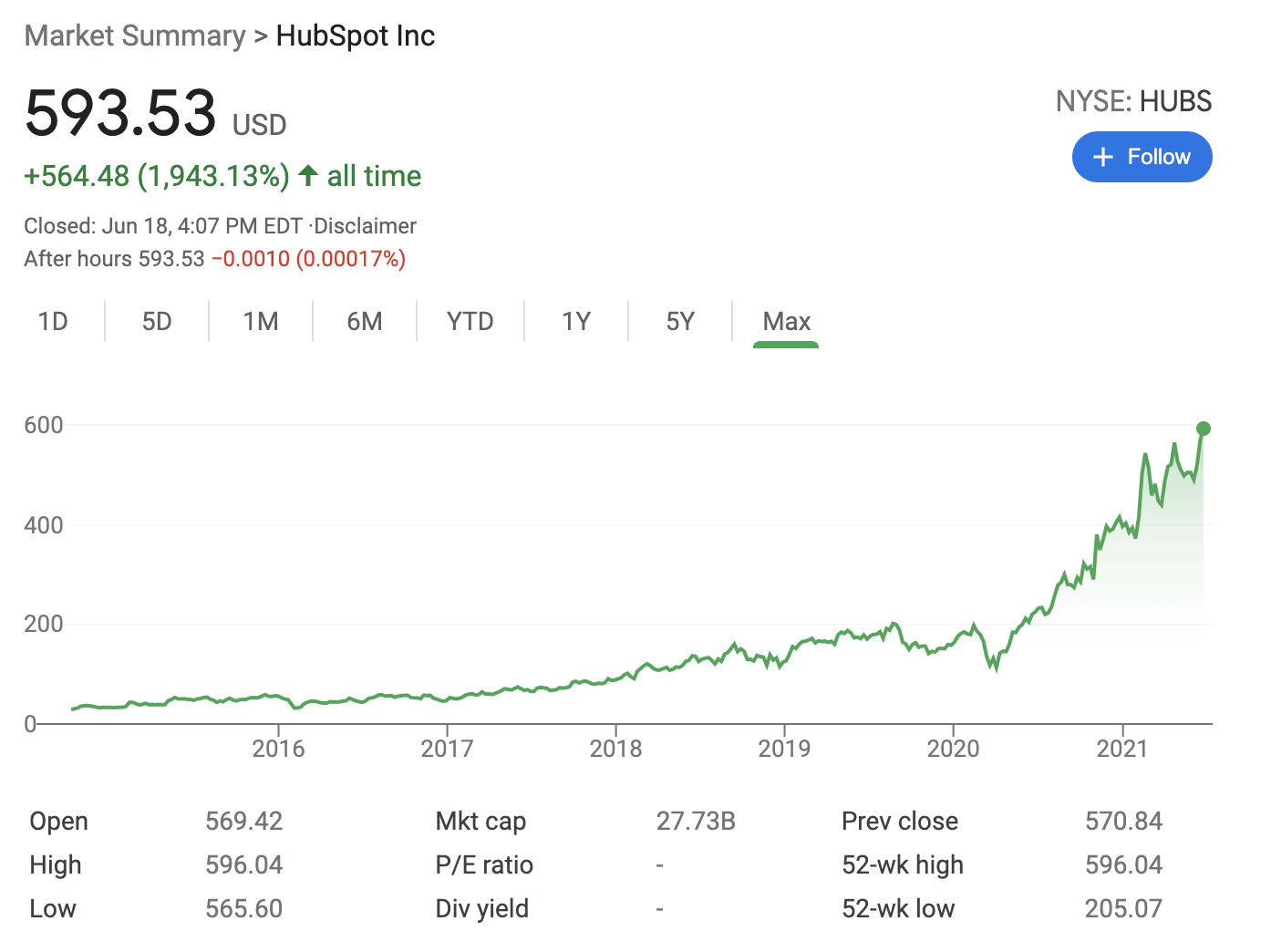
If you’re still not convinced, ask yourself: how would it feel if my customers and even my competitors began adopting my language and ideas?
The Long Game
Tackling top-of-funnel content is for the patient-minded who want to win the long game. It is not an overnight sprint to success but a slow and methodical climb to the top.
You have to think of top-of-funnel content as a loss leader. If you’re asking about conversions from top-of-funnel content, you’re asking the wrong question.
Try this: What’s the first brand that comes to mind when you think about integrating two applications together?
Was it Zapier?
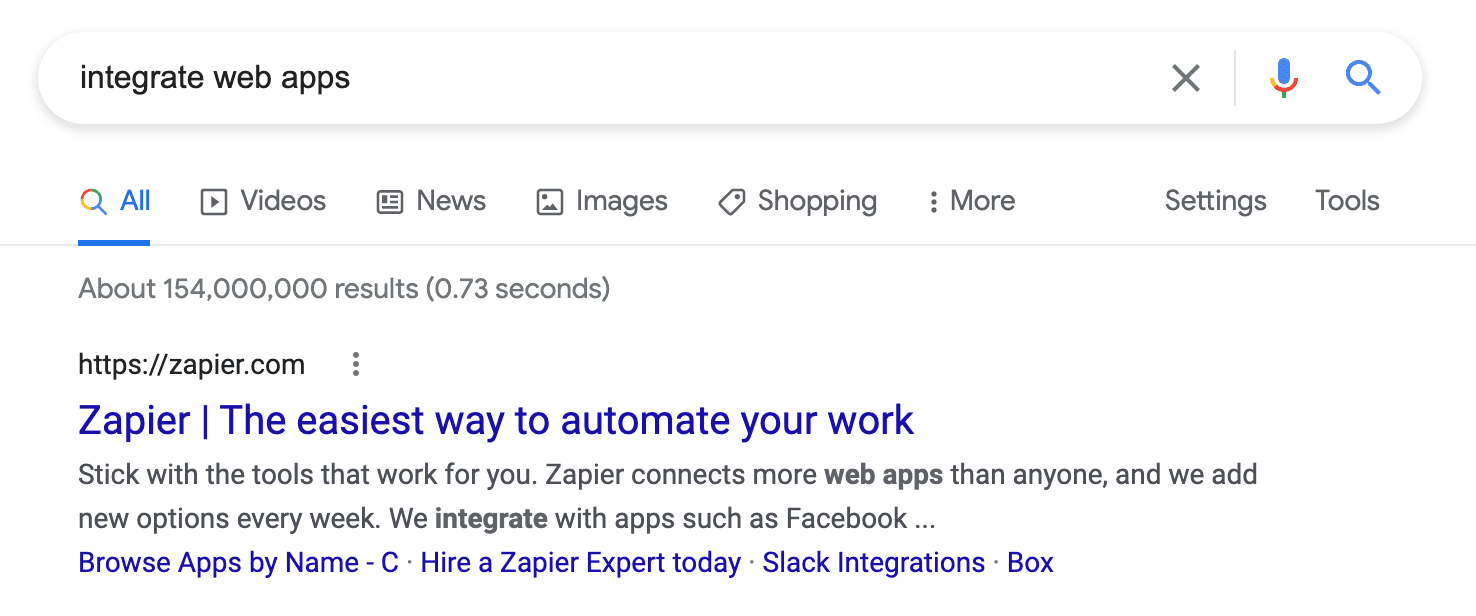
Top-of-funnel content is how you build up momentum within a market and become the brand that comes to mind when people think about your industry.
The links that top-of-funnel content help attract will also make it easier to rank for the more conversion-focused phrases that fall lower in the funnel as well.
That equity gets passed around throughout your site via internal links, helping SEO-driven content deliver compounding results over time.
When TOFU isn't the Right Thing to Do
There are times when you shouldn’t focus on top-of-funnel content. If you’ve built up a large amount of TOFU traffic but struggle converting visitors into customers, more top-of-funnel content won’t help. It’ll make the problem worse.
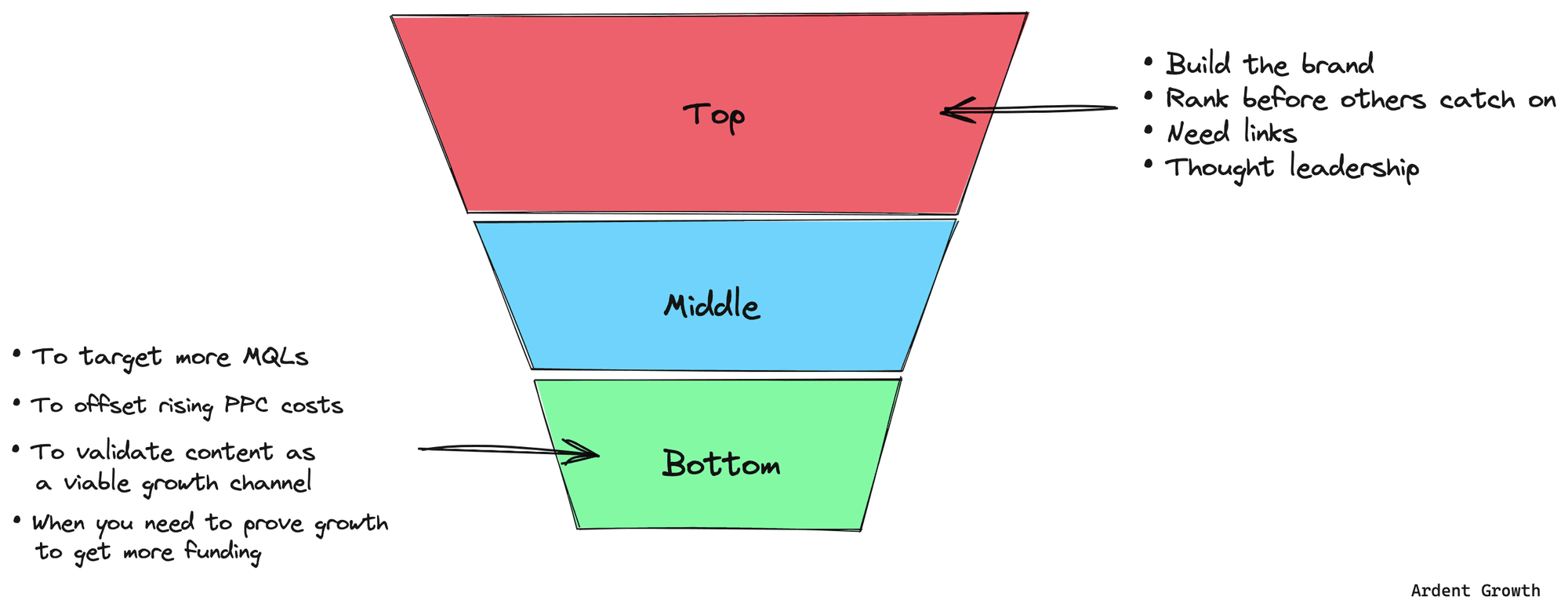
Example: Asana & Scoro
Consider a company like Asana. Asana leads the pack in the G2 grid for project management software. They also get an estimated 2.1 million visitors from organic traffic per month (79% branded). They have a free plan for up to 15 users, something we all know helps increase sign-ups and to grow faster.

I don’t know how well Asana is converting free customers to paid, but I guarantee increasing that number is high on their priority list.
They don’t need more top-of-funnel content to do this. They need middle-of-funnel and bottom-of-funnel content that will convince free customers to upgrade.
If we contrast that with a tool like Scoro, we see a different story.
Google Trends shows Scoro doesn’t even average above 1% of total interest over the past five years compared to Asana, Trello, ClickUp, and Wrike.
These tools all have a free version except for Scoro.
And that’s fine.
Scoro has the most robust feature set (that’s also relatively bug-free...looking at you ClickUp 👀) amongst the pack. It wouldn’t make sense from a business perspective for Scoro to offer a free plan. It also doesn't mean Scoro would benefit from more top-of-funnel traffic.
Scoro only gets about .003% of the branded search traffic that Asana gets and less than .0008% of the aggregate branded search traffic across the other five tools.
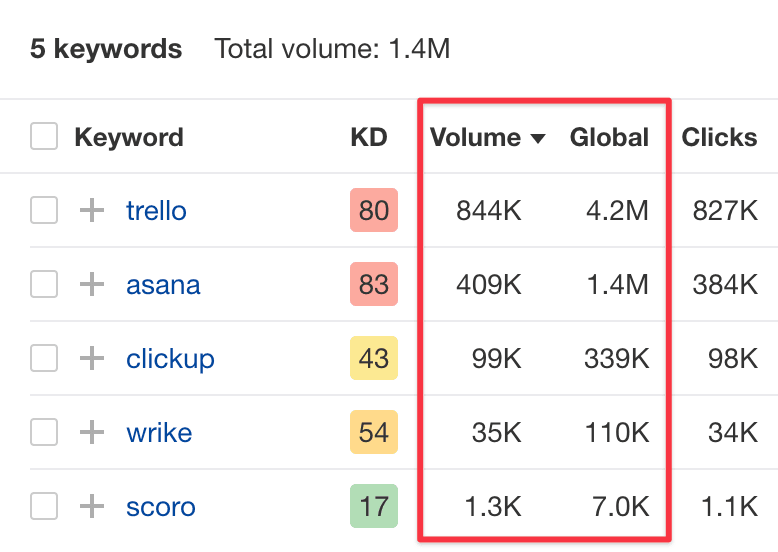
However, Scoro has a lot of great content across the whole funnel. They rank well for TOFU queries like:
project management toolsinvoicing softwarecrm toolsbusiness budgeting softwaretime management tools

While they could benefit from more top-of-funnel traffic, it’s unlikely to be a primary constraint on growth.
Scoro wants to attract a much more sophisticated audience. Scoro has the ability to handle quotes, invoicing, project management, utilization, and robust reporting. All things that Asana tries to do, albeit more ornamental than anything.
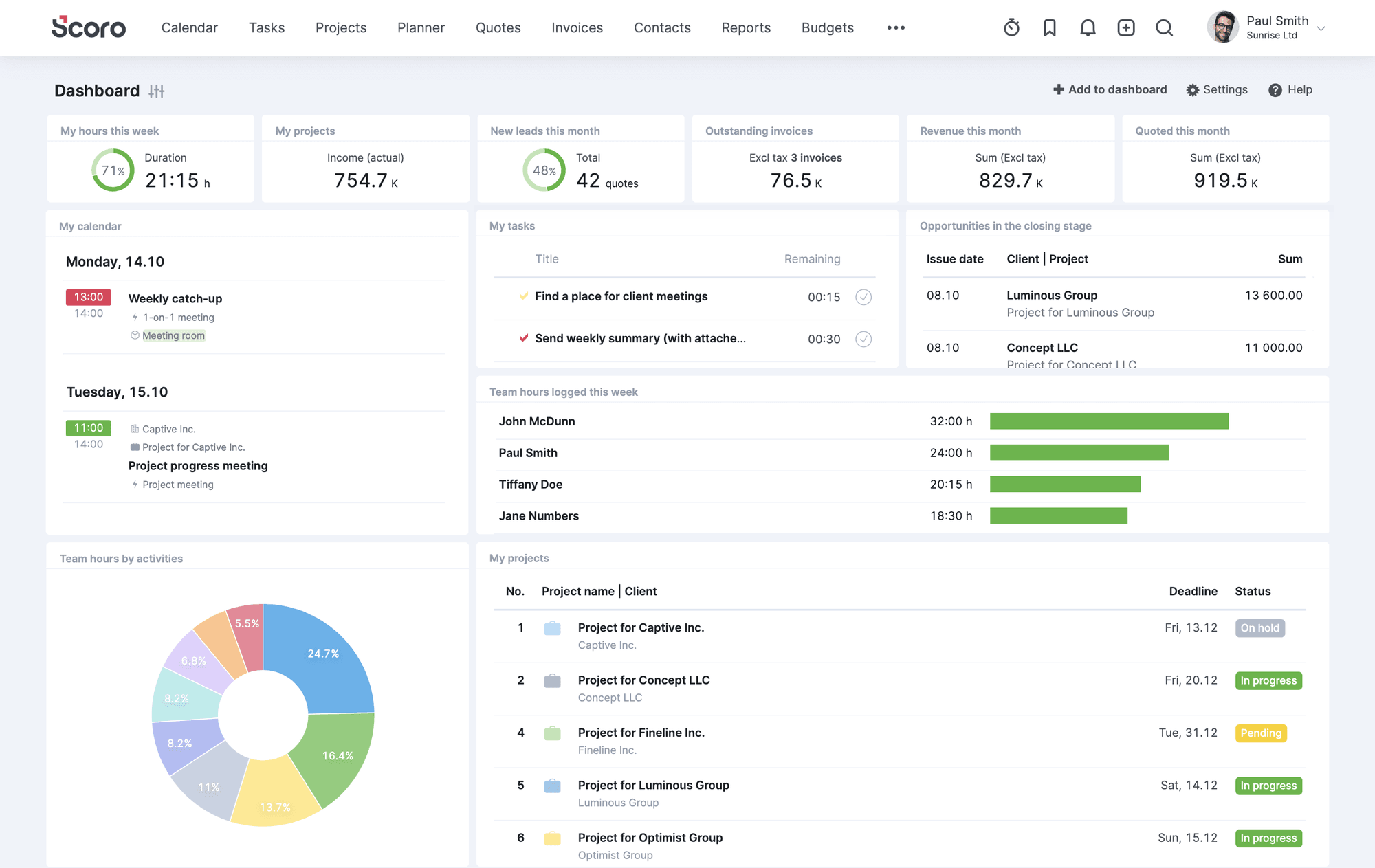
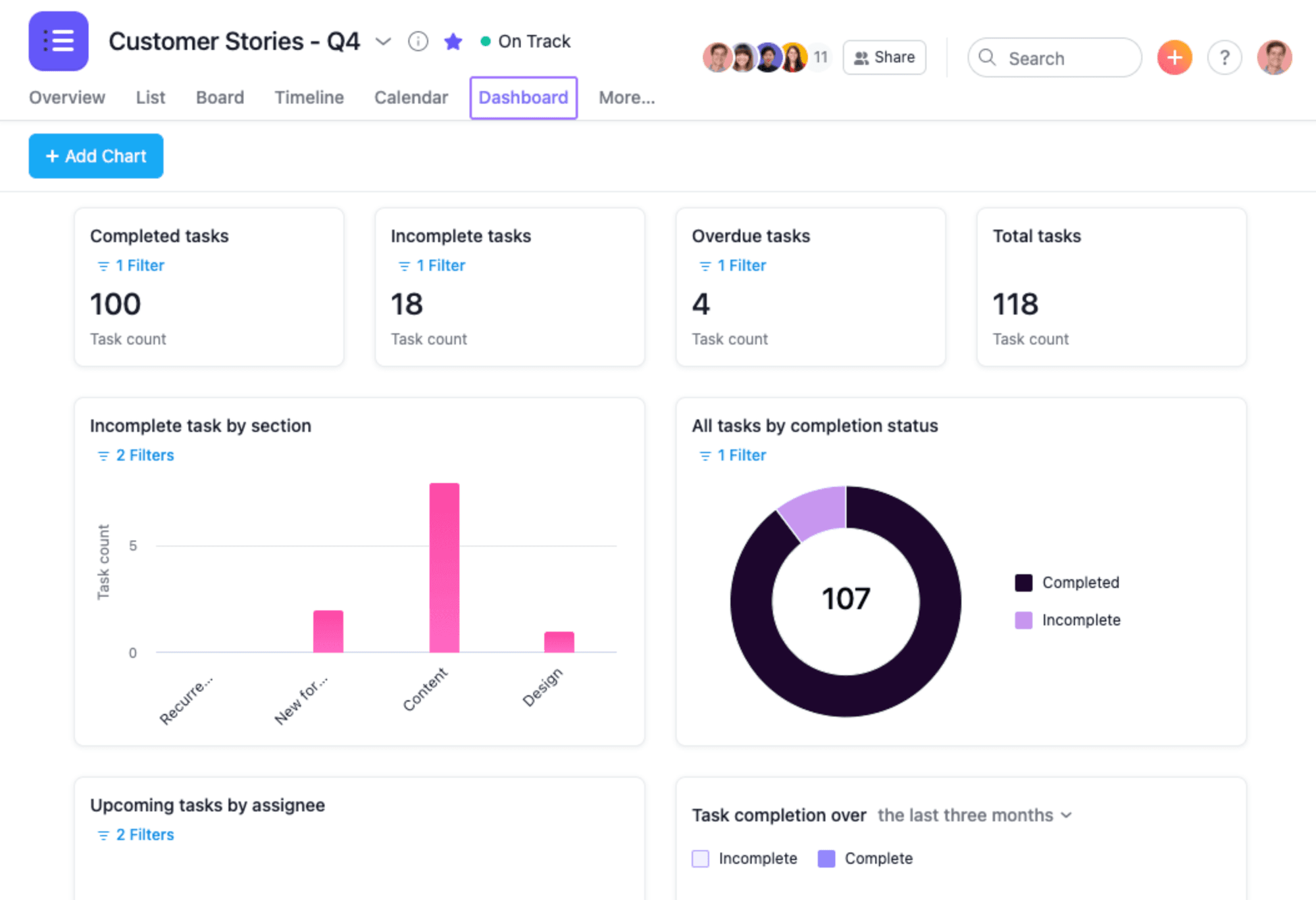
What Scoro likely needs, if anything, is more advertising to increase their brand awareness or more flexible pricing plans.
For example, a scaled-down version of their Ultimate tier with all the same features but a lower minimum user requirement (the current requirement is a minimum of 5). More accessible for smaller teams to jump in and experience what they’ve been missing would be a quick way to get people spreading the word. Video testimonial content anyone? ✋
It’s not a question of if every brand needs top, middle, or bottom-of-funnel content—it’s a question of when and how much. It’s a matter of timing, current constraints, and the marketing trajectory of the business.
Remember, You’re not a Day Trader
Top-of-funnel content unlocks constraints preventing companies from achieving compounding growth from organic search. It is not something you can do overnight.
The biggest, most lucrative keywords take a lot of high-quality content bolstered by a web of supporting content, and links.
Quick wins are great, but they’re momentary.
If you solely focus on quick wins, you’ll miss out on far greater growth down the road. At some point, you have to tackle the bigger terms too if you want to stay competitive.
Don’t get distracted by the allure of quick money like a day trader while your competitors build a Warren Buffet-like momentum that you can’t catch up to.

